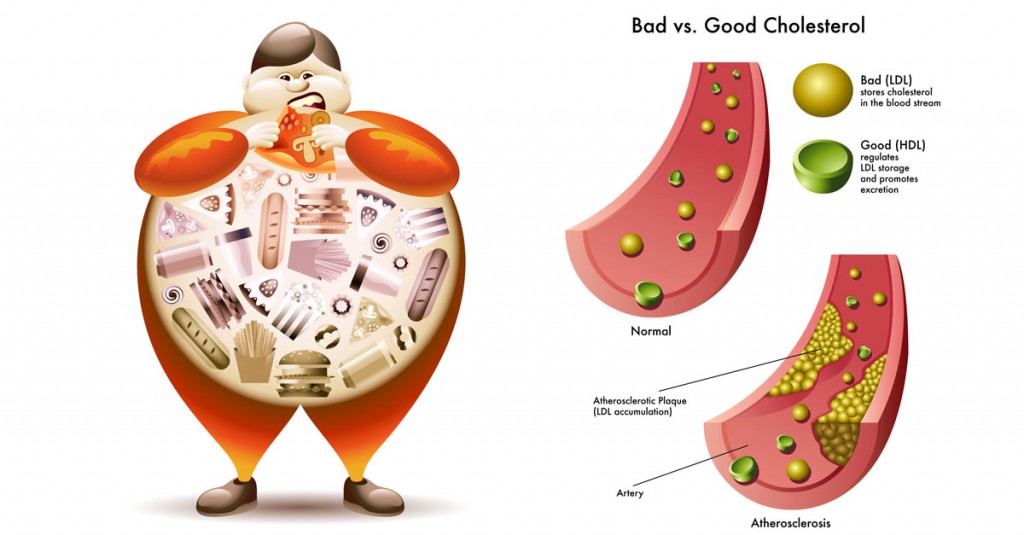Good, Bad, and Ugly Cholesterol And How to Control It?
Nowadays, people become increasingly aware of the health dangers associated with cholesterol, but not everyone knows about various cholesterol types and the difference between them. Also, many of us tend to postpone the visits to the medical specialists until we notice obvious symptoms of health complications, which is certainly not a healthy approach. Regular health checkups and blood tests to determine your levels of cholesterol can help prevent the development of many conditions in the future.
How does cholesterol affect our bodies?
Cholesterol plays a highly important role in the body of every person. It helps make vitamin D, develop essential hormones, and it is involved in the creation of bile acid that in turn helps absorb vitamins D, E, A, and K, and also digest the foods high in fat. In such a way, cholesterol only becomes an issue when it starts getting out of control. People get cholesterol from the foods they eat, but consumption of large amounts of saturated fats can lead to the excessive production of cholesterol by your liver. Eating a lot of eggs, meat, dairy products, increases your levels of cholesterol.
Cholesterol types and important difference between them
Most people are used to hearing about “bad” and “good” types of cholesterol that can be found in the bodies. Low-density lipoprotein is considered “bad” cholesterol as it leads to the buildup of plaque in the arteries. Such plaque buildup contributes to atherosclerosis, which is characterized by the loss of arteries flexibility and increased chances of blood clots formation. Moreover, people diagnosed with increased levels of bad cholesterol are a lot more likely to suffer from ischemic heart disease. On the contrary, high-density lipoprotein is what we call “good” cholesterol as it eliminates LDL from the arteries by bringing it to the liver where it gets successfully broken down.
Ugly cholesterol – an issue ignored by many
While most people these days know about bad and good types of cholesterol, there also exists another one, which is discussed a lot less. Ugly cholesterol is the type that results from elevated levels of triglycerides in the blood. These days a lot of medical professional put their focus on increasing the levels of HDL cholesterol while not paying nearly enough attention to ugly cholesterol. But, according to the statistics, approximately one in three adults is tested with high levels of ugly cholesterol, making them more prone to heart diseases.
What is the reason for the accumulation of ugly cholesterol?
Ugly cholesterol becomes an issue when a person consumes more calories than the body should get to function properly. Because of such excessive calories intake, people gain weight and experience elevated levels of triglycerides. In such a way, the best strategy to avoid high triglyceride levels is to maintain a healthy weight. You should remember that juices, processed carbs, and some other foods quickly add calories and increase the levels of sugar, so if your diet includes a lot of sugar that you don’t use up, it will inevitably get converted into triglycerides. It should be mentioned that even if your weight is normal, you should still pay attention to your levels of ugly cholesterol because your ethnicity and heredity can make you more prone to high levels of triglycerides.

When it comes to determining your cholesterol levels, the medical specialists recommend checking the levels of ugly cholesterol along with HDL and LDL about once every 4-6 years. If you have a family medical history of cholesterol problems, you should get the screenings more regularly, approximately once a year.
How can you prevent increased levels of ugly cholesterol?
Proper diet and exercise regime are essential in maintaining appropriate cholesterol levels and preventing accumulation of ugly cholesterol. To ensure the best results, it’s essential to:
- Reduce the consumption of processed carbohydrates.
- Limit your intake of beverages and foods high in sugar.
- Avoid consumption of alcohol.
- Quit smoking.
- Stay physically active, thus promoting the development of good cholesterol.
For a lot of patients changing the diet and starting to work out doesn’t always bring the desired results. In these cases, the patients are recommended to take drugs aimed at lowering cholesterol levels, and in combination with the mentioned preventative steps such treatment can bring excellent results.
Medical approach to solving the problem of ugly cholesterol
Fortunately, nowadays we have a variety of drugs to choose from that can help us lower the levels of cholesterol when dietary changes and exercises are simply not enough. The drugs that are often consumed for the reduction of bad and ugly cholesterol levels belong to statins. This type of medications works by blocking the liver enzyme, which is responsible for the cholesterol production. Other widely prescribed drugs are called fibrates, and they are consumed to reduce the development of triglycerides and increase the levels of good cholesterol.
At Canadian Health&Care Mall www.canadian-healthcare.com, you can select a suitable cholesterol-lowering drug from a number of options, including widely prescribed medications, such as Zetia, Zocor, Crestor, Niaspan, Vytorin, and others. The drugs displayed on the website come from trustworthy pharmaceutical producers and created according to the highest quality standards.
